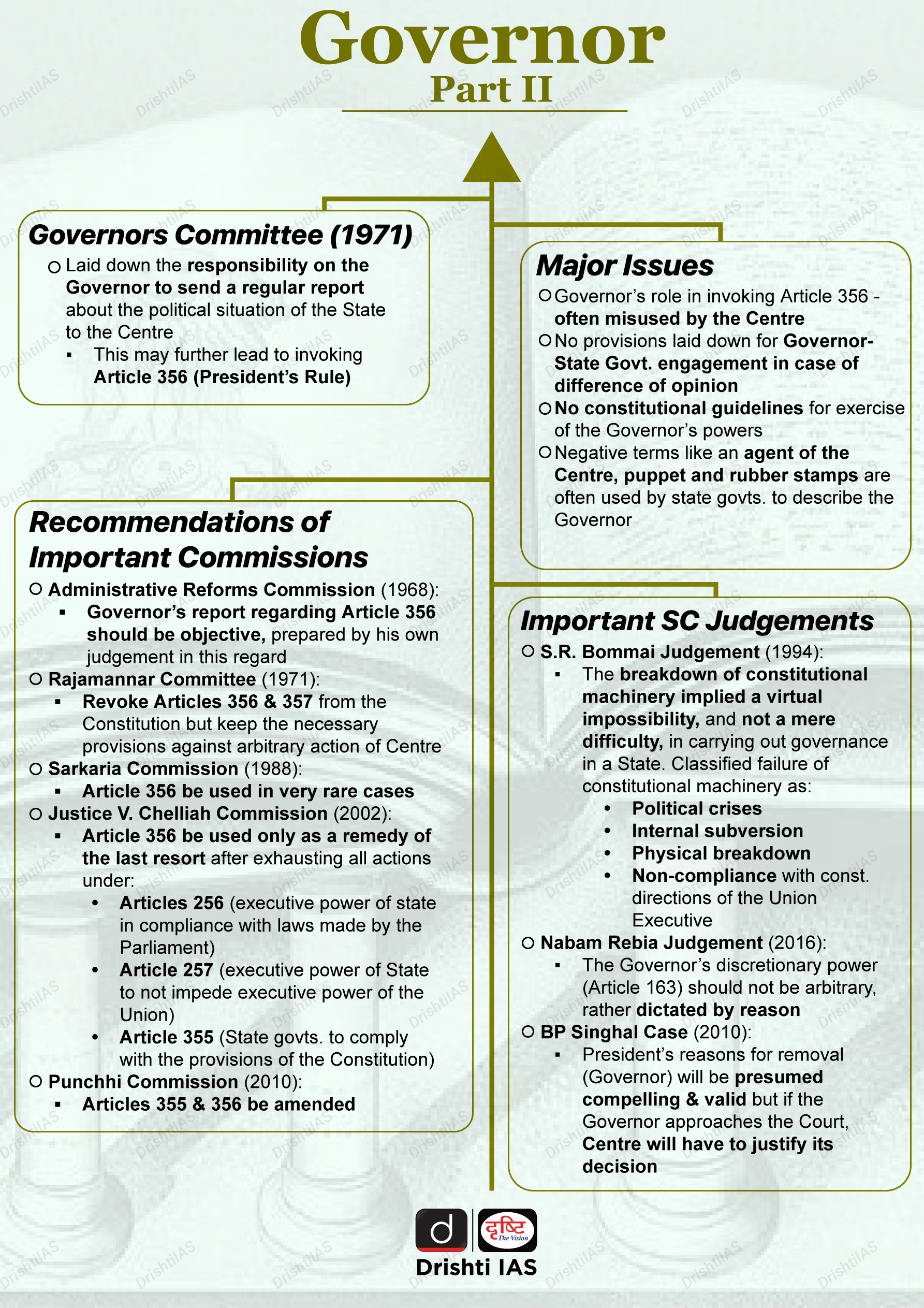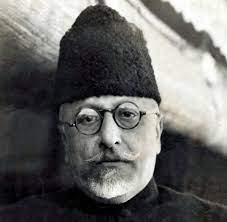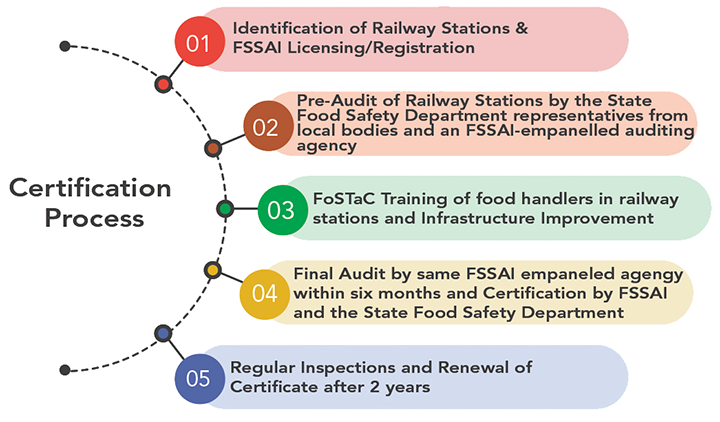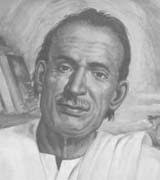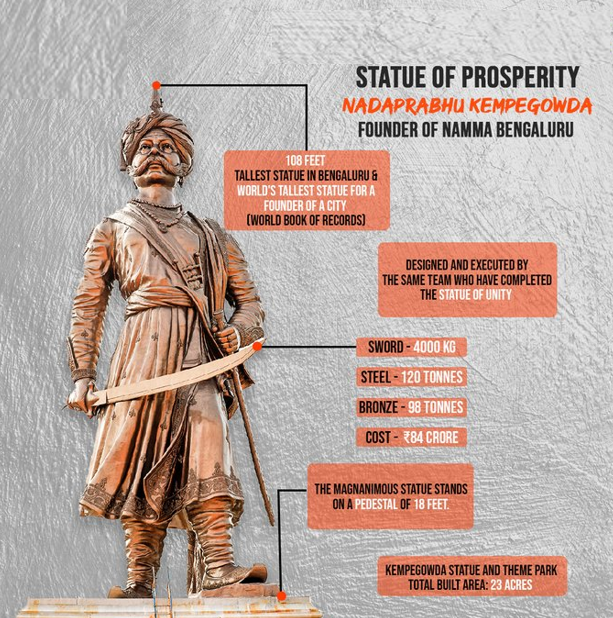Infographics
Indian History
Maulana Abul Kalam Azad
For Prelims: Morley-Minto reforms (1909), Non-Cooperation Movement, Gandhiji’s Salt Satyagraha.
For Mains: Maulana Abul Kalam Azad and his contributions.
Why in News?
Prime Minister of India paid tributes to India's first education minister Maulana Abul Kalam Azad on his 134th birth anniversary.
- 11th November is observed as National Education Day every year since 2008 to commemorate his birth anniversary.
Who was Maulana Abdul Kalam Azad?
- Birth: Maulana Abul Kalam Azad, originally named Muhiyuddin Ahmad, was born in 1888 in Mecca, Saudi-Arabia.
- Azad was a brilliant debater, as indicated by his name - “Abul Kalam” which literally means “Lord of Dialogues”.
- Brief Profile:
- He donned many hats of being a journalist, freedom fighter, politician, and educationist.
- Contributions (Pre-Independence):
- He was a proponent of Hindu Muslim unity, opposed to Partition.
- In 1912, he started a weekly journal in Urdu called Al-Hilal which played an important role in forging Hindu-Muslim unity after the bad blood created between the two communities in the aftermath of Morley-Minto reforms (1909).
- Under the 1909 reforms, the provision of separate electorates for Muslims was resented by Hindu.
- The government regarded Al- Hilal as a propagator of secessionist views and banned it in 1914.
- Maulana Abul Kalam Azad then started another weekly called Al-Balagh with the same mission of propagating Indian nationalism and revolutionary ideas based on Hindu-Muslim unity.
- In 1916, the government banned this paper too and expelled Maulana Abul Kalam Azad from Calcutta and exiled him to Bihar from where he was released after the First World War 1920.
- In 1912, he started a weekly journal in Urdu called Al-Hilal which played an important role in forging Hindu-Muslim unity after the bad blood created between the two communities in the aftermath of Morley-Minto reforms (1909).
- Azad supported the Non-Cooperation Movement (1920-22) started by Gandhiji and entered the Indian National Congress in 1920.
- In 1923, he was elected as the president of Indian National Congress. At an age of 35, he became the youngest person to serve as the President of the Indian National Congress.
- Maulana Azad was arrested in 1930 for violation of the salt laws as part of Gandhiji’s Salt Satyagraha. He was put in Meerut jail for a year and a half.
- He again became the president of Congress in 1940 and remained in the post till 1946.
- He was a proponent of Hindu Muslim unity, opposed to Partition.
- An Educationist:
- In the field of education, Maulana Azad had been an uncompromising exponent of universalism, a truly liberal and humanitarian educational system.
- Azad’s ideal was a fusion of the Eastern and Western concepts of man, to create a fully integrated personality. Whereas the Eastern concept dwelt on spiritual excellence and individual salvation, the Western concept laid stress on worldly achievements and social progress.
- He was one of the founding members of the Jamia Millia Islamia University, originally established at Aligarh in the United Provinces in 1920.
- His Works: Basic Concept of Quran, Ghubar-eKhatir, Dars-e-Wafa, India Wins Freedom, etc.
- Contributions (Post-Independence):
- In 1947, he became the first education minister of free India and remained at this post till his death in 1958. In his tenure, he did tremendous work for the upliftment of the country.
- The first IIT, IISc, School of Planning and Architecture and the University Grants Commission were established under his tenure as the education minister.
- Indian Council for Cultural Relations, for introduction of Indian culture to other nations.
- Following three academics were formed:
- Sahitya Academy for development of literature;
- Sangeet Natak Academy for the development of Indian music and dance;
- Lalit Kala Academy for the development of painting.
- In 1947, he became the first education minister of free India and remained at this post till his death in 1958. In his tenure, he did tremendous work for the upliftment of the country.
- Maulana Abul Kalam Azad was posthumously awarded India's highest civilian honour, Bharat Ratna in 1992.
UPSC Civil Services Examination Previous Year Question (PYQ)
Prelims
Q. Which one of the following was a journal brought out by Abul Kalam Azad? (2008)
(a) Al-Hilal
(b) Comrade
(c) The Indian Sociologist
(d) Zamindar
Ans: (a)
Mains
Q. Discuss the contribution of Maulana Abul Kalam Azad to pre-and post-independent India. (2013)


Indian Economy
Tea Industry of India
For Prelims: Tea, Indian Tea Industry, Geographical Indication (GI) Tag, Darjeeling Tea, Tea Board of India, One District and One Product (ODOP) Scheme, Tea Promotion and Development Scheme, Chai Sahyog Mobile App.
For Mains: State of Indian Tea Industry and Related Government Initiatives.
Why in News?
Recently, Union Minister addressed the Indian Tea Association’s (ITA’s) International Small Tea Grower's Convention.
- Founded in 1881, the ITA is the premier and the oldest organization of tea producers in India. It has played a multi-dimensional role towards formulating policies and initiating action towards the development and growth of the industry.
What is the State of Indian Tea Industry?
- Production:
- India is the second-largest producer of tea globally.
- The northern part of India is the biggest producer at about 83% of the country's annual tea production in 2021-22 with the majority of the production coming from Assam followed by West Bengal.
- The Assam valley and Cachar are the two tea producing regions in Assam.
- In West Bengal, Dooars, Terai and Darjeeling are the three major tea producer regions.
- The southern part of India produces about 17% of the country's total production with the major producing states being Tamil Nadu, Kerala, and Karnataka.
- The northern part of India is the biggest producer at about 83% of the country's annual tea production in 2021-22 with the majority of the production coming from Assam followed by West Bengal.
- India's total tea production for the financial year 2020-21 it was 1,283 million kg.
- India is the second-largest producer of tea globally.
- Consumption:
- India is also among the world's top tea consuming countries, with 80% of the tea produced in the country consumed by the domestic population.
- Export:
- India is among the top 5 tea exporters in the world making about 10% of the total exports.
- In the year 2021, the total value of tea exports from India was around USD 687.9 million.
- India exports tea to more than 25 countries throughout the world.
- Russia, Iran, UAE, USA, the UK, Germany, and China are some of the major importers of tea from India.
- India's total tea exports during 2021-22 in quantity was 201 million kg.
- The majority of the tea exported out of India is black tea which makes up about 96% of the total exports.
- The types of tea exported through India are: Black tea, Regular tea, Green tea, Herbal tea, Masala tea and Lemon tea.
- Out of these, black tea, regular tea and green tea make up approximately 80%, 16% and 3.5% of the total tea exported from India.
- Indian Assam, Darjeeling, and Nilgiri tea are considered one of the finest in the world.
- Indian tea is one of the finest in the world due to strong geographical indications, heavy investment in tea processing units, continuous innovation, augmented product mix, and strategic market expansion.
- The types of tea exported through India are: Black tea, Regular tea, Green tea, Herbal tea, Masala tea and Lemon tea.
- India is among the top 5 tea exporters in the world making about 10% of the total exports.
- Geographical Indication (GI) Tag:
- Regulation of the Industry:
- Tea Board of India is in charge of developing and promoting the tea industry in India.
What is Tea Board of India?
- About:
- It is a statutory body under the Ministry of Commerce that was set up in 1953 for the development of tea industry in India. It started functioning in 1954.
- Vision:
- Its vision and mission is to make the country a leading producer of tea across the globe for which it established several programmes and schemes.
- Members:
- The Board is constituted of 31 members (including Chairman) drawn from Members of Parliament, tea producers, tea traders, tea brokers, consumers, and representatives of Governments from the principal tea producing states, and trade unions
- The Board is reconstituted every three years.
- The Board is constituted of 31 members (including Chairman) drawn from Members of Parliament, tea producers, tea traders, tea brokers, consumers, and representatives of Governments from the principal tea producing states, and trade unions
- Offices in India:
- The board has its headquarters located in Kolkata and 17 other offices across India.
- Foreign Offices:
- Currently Tea Board has two overseas offices located at Dubai, and Moscow.
What are the Initiatives by Tea Board of India?
- Promotion for packaged Tea of Indian origin:
- The scheme provides assistance in promotional campaigns - up to 25% of the cost reimbursement, display in International Departmental Stores, product literature and website development, and inspection charges reimbursement of up to 25% of the charges.
- Subsidies for Domestic Exporters:
- The Tea Board also provides subsidies to the domestic exporters to participate in International Fairs and Exhibitions.
- Tea Development and Promotion Scheme:
- This scheme was launched in November 2021 by the Tea Board of India for the period of 2021-26.
- The objective of this scheme is to enhance the productivity and quality of the production in India.
- There are seven important components to this scheme:
- Plantation development of small tea farmers
- Creation of sector specific actions plan for North East India
- Supporting the tea producers and trader in market promotion activities
- Worker's welfare
- Research and development activities
- Regulatory reforms
- Establishment expenses
- Online Licensing System (auto-renewal of 3 types of licenses i.e., exporter license, tea waste license and tea warehouse license).
- Chai Sahyog Mobile App:
- It addresses various issues of small tea growers.
What is Tea?
- About:
- Tea is a beverage made from the Camellia sinensis plant. It is the world’s most consumed drink, after water.
- Origin:
- It is believed that tea originated in northeast India, north Myanmar and southwest China, but the exact place where the plant first grew is not known. There is evidence that tea was consumed in China 5,000 years ago.
- Growth Conditions:
- Climate: Tea is a tropical and sub-tropical plant and grows well in hot and humid climates.
- Temperature: The ideal temperature for its growth is 20°-30°C and temperatures above 35°C and below 10°C are harmful for the bush.
- Rainfall: It requires 150-300 cm annual rainfall which should be well distributed throughout the year.
- Soil: The most suitable soil for tea cultivation is slightly acidic soil (without calcium) with porous sub-soil which permits a free percolation of water.
- Significance:
- The tea industry being one of the most important cash crops is a main source of income and export revenues for some of the poorest countries and, as a labour-intensive sector, provides jobs, especially in remote and economically disadvantaged areas.
- Tea production and processing contributes to the Sustainable Development Goals (SDGs) including reduction of extreme poverty (Goal 1), the fight against hunger (Goal 2), the empowerment of women (Goal 5) and the sustainable use of terrestrial ecosystems (Goal 15).
- It also has cultural significance in many societies.
- The tea industry being one of the most important cash crops is a main source of income and export revenues for some of the poorest countries and, as a labour-intensive sector, provides jobs, especially in remote and economically disadvantaged areas.
- Health benefits:
- Tea consumption can bring health benefits and wellness due to the beverage's anti-inflammatory, antioxidant and weight loss effects.
- International Tea Day:
- It is observed on 21st May every year after it was designated by the United Nations General Assembly in December 2019.
How to Encourage the Growth of Indian Tea Industry?
- One District and One Product (ODOP) scheme can help spreading the glory of Indian Tea.
- In order to make the tea sector profitable, viable and sustainable, the ‘AROMA’ of tea must be enhanced:
- Assistance: Support small growers to improve quality with sustainability, increase production to meet domestic and international demand.
- Re-energise: Create infrastructure to augment exports and focus on high value markets such as EU, Canada, South America & Middle East.
- Organic: Promote organic and GI tea through brand promotion and marketing.
- Modernisation: To enable tea farmers to become self-reliant and strengthen local supply chains.
- Adaptability: Focus on the importance of a risk proof ecosystem, that is, the need for sustainable solutions to make tea plantations meet the challenges of climate change.
UPSC Civil Services Examination, Previous Year Questions (PYQ)
Prelims
Q1. With reference to the "Tea Board" in India, consider the following statements: (2022)
- The Tea Board is a statutory body.
- It is a regulatory body attached to the Ministry of Agriculture and Farmers Welfare.
- The Tea Board's Head Office is situated in Bengaluru.
- The Board has overseas offices at Dubai and Moscow.
Which of the statements given above are correct?
(a) 1 and 3
(b) 2 and 4
(c) 3 and 4
(d) 1 and 4
Ans: (d)
Exp:
- Tea Board is functioning as a statutory body of the Central Government. Hence, statement 1 is correct.
- It comes under the Ministry of Commerce. Hence, statement 2 is not correct.
- The Board is constituted of 31 members (including Chairman) drawn from Members of Parliament, tea producers, tea traders, tea brokers, consumers, and representatives of Governments from the principal tea producing states, and trade unions. The Board is reconstituted every three years.
- Foreign Offices: Currently Tea Board has two overseas offices located at Dubai, and Moscow. All these foreign offices of the Board are designed to undertake the various promotional measures to boost up export of Indian tea. These offices also act as a liaison office for interaction between importers of Indian tea of the respective regions as well as Indian Exporters. Hence, statement 4 is correct.
- Its headquarters is situated in Kolkata. Hence, statement 3 is not correct.
- Therefore, option D is correct.
Q2. Consider the following States: (2022)
- Andhra Pradesh
- Kerala
- Himachal Pradesh
- Tripura
How many of the above are generally known as tea-producing States?
(a) Only one State
(b) Only two States
(c) Only three States
(d) All four States
Ans: (c)
Exp:
- According to the Tea Board of India Annual Report 2019-2020, generally known tea producing States are Assam, Tripura, West Bengal, Tamil Nadu, Kerala, Himachal Pradesh.
- Hence, option C is correct.
Mains
Q. Whereas the British planters had developed tea gardens all along the Shivaliks and Lesser Himalayas from Assam to Himachal Pradesh, in effect they did not succeed beyond the Darjeeling area. Explain. (2014)

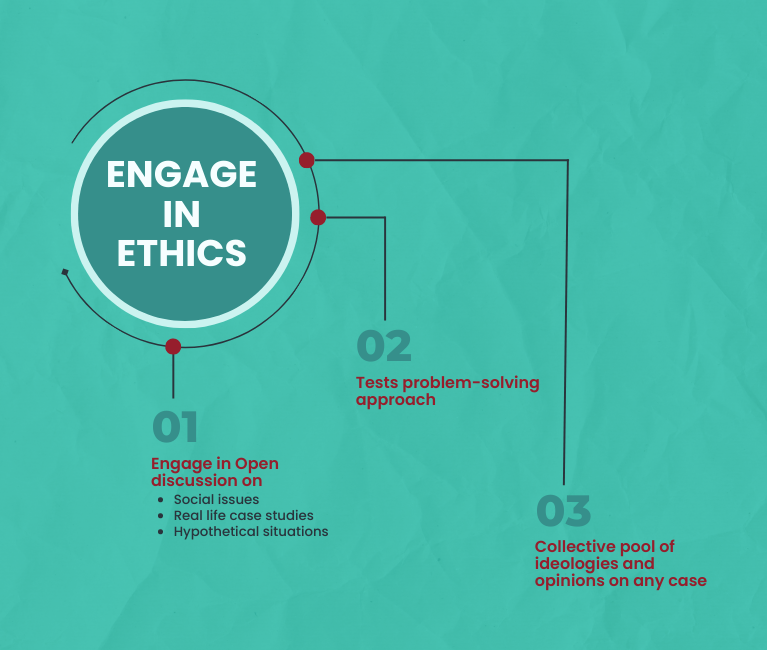
Biodiversity & Environment
Mangrove Alliance for Climate
For Prelims: Mangrove Alliance for Climate, Mangrove, global warming, Sundarbans
For Mains: Significance of Mangroves ecosystem
Why in News?
During the COP27 climate summit in Sharm El Sheikh, Egypt, the UAE and Indonesia announced the "Mangrove Alliance for Climate."
What is the Mangrove Alliance for Climate (MAC)?
- It includes UAE, Indonesia, India, Sri Lanka, Australia, Japan, and Spain.
- It seeks to educate and spread awareness worldwide on the role of mangroves in curbing global warming and its potential as a solution for climate change.
- However, the intergovernmental alliance works on a voluntary basis which means that there are no real checks and balances to hold members accountable.
- Instead, the parties will decide their own commitments and deadlines regarding planting and restoring mangroves.
- The members will also share expertise and support each other in researching, managing and protecting coastal areas.
What are Mangroves?
- About:
- Mangroves are defined as assemblages of salt tolerant trees and shrubs that grow in the intertidal regions of the tropical and subtropical coastlines.
- They grow luxuriantly in the places where freshwater mixes with seawater and where sediment is composed of accumulated deposits of mud.
- Features:
- Saline Environment: They can survive under extreme hostile environments such as high salt and low oxygen conditions.
- Low oxygen: Underground tissue of any plant needs oxygen for respiration. But in a mangrove environment, the oxygen in soil is limited or nil.
- For the purpose of breathing, they develop special roots called pneumatophores.
- Survival in Extreme Conditions: With their roots submerged in water, mangrove trees thrive in hot, muddy, salty conditions that would quickly kill most plants.
- Viviparous: Their seeds germinate while still attached to the parent tree. Once germinated, the seedling grows into a propagule.
- A propagule is a vegetative structure that can become detached from a plant and give rise to a new plant. Examples include a bud, sucker, or spore.
- Significance:
- Mangroves trap and cycle various organic materials, chemical elements, and important nutrients in the coastal ecosystem.
- They provide one of the basic food chain resources for marine organisms.
- They provide physical habitat and nursery grounds for a wide variety of marine organisms, many of which have important recreational or commercial value.
- Mangroves also serve as storm buffers by reducing wind and wave action in shallow shoreline areas.
- Area Covered:
- Global Mangrove Cover:
- The total mangrove cover in the world is one 1,50,000 sq kms.
- Asia has the largest number of mangroves worldwide.
- South Asia comprises 6.8% of the world's mangrove cover.
- Indian Mangrove Cover:
- India's contribution is 45.8% total mangrove cover in South Asia.
- According to the Indian State Forest Report 2021, Mangrove cover in India is 4992 sq. Km which is 0.15% of the country's total geographical area.
- Largest Mangrove Forest: Sundarbans in West Bengal are the largest mangrove forest regions in the world. It is listed as a UNESCO World Heritage Site.
- It is followed by Gujarat and Andaman, and Nicobar Islands.
- Global Mangrove Cover:
What are the Challenges with Mangrove Conservation?
- Commercialisation of Coastal Areas:
- Aquaculture, coastal development, rice and palm oil farming and industrial activities are rapidly replacing these salt-tolerant trees and the ecosystems they support.
- Shrimp Farms:
- The emergence of shrimp farms have caused at least 35% of the overall loss of mangrove forests.
- The rise of shrimp farming is a response to the increasing appetite for shrimp in the United States, Europe, Japan and China in recent decades.
- The emergence of shrimp farms have caused at least 35% of the overall loss of mangrove forests.
- Temperature Related Issues:
- A fluctuation of ten degrees in a short period of time is enough stress to damage the plant and freezing temperatures for even a few hours can kill some mangrove species.
- Soil Related Issues:
- The soil where mangroves are rooted poses a challenge for plants as it is severely lacking in oxygen.
- Excessive Human Intervention:
- During past changes in sea level, mangroves were able to move further inland, but in many places human development is now a barrier that limits how far a mangrove forest can migrate.
- Mangroves also frequently suffer from oil spills.
What are the Related Initiatives?
- UNESCO Designated Sites: The inclusion of mangroves in Biosphere Reserves, World Heritage sites and UNESCO Global Geoparks contributes to improving the knowledge, management and conservation of mangrove ecosystems throughout the world.
- International Society for Mangrove Ecosystem (ISME): The ISME is a non-governmental organization established in 1990 to promote the study of mangroves with the purpose of enhancing their conservation, rational management and sustainable utilization.
- Blue Carbon Initiative: It is focused on mitigating climate change through the conservation and restoration of coastal and marine ecosystems.
- It is coordinated by Conservation International (CI), IUCN, and the Intergovernmental Oceanographic Commission-UNESCO (IOC-UNESCO).
- International Day for the Conservation of the Mangrove Ecosystem: UNESCO celebrates this day on 26th July with the aim of raising awareness about mangrove ecosystems and to promote their sustainable management and conservation.
Way Forward
- Conservation of mangroves needs to be linked with a broader perspective with active community involvement, environmental security, and reducing any risks from natural calamities.
- Such measures need to be adopted more holistically in view of anticipatory adaptation measures which hold the clue for successful and effective management.
- The integration of mangroves into the national programmes for reducing emissions from deforestation and forest degradation is the need of the hour.
- Creating a new carbon sink from mangrove afforestation and reducing emissions from mangrove deforestation are two possible ways for countries to meet their NDC targets and achieve carbon neutrality.
UPSC Civil Services Examination Previous Year Question (PYQ)
Prelims
Q. Which one of the following regions of India has a combination of mangrove forest, evergreen forest and deciduous forest? (2015)
(a) North Coastal Andhra Pradesh
(b) South-West Bengal
(c) Southern Saurashtra
(d) Andaman and Nicobar Islands
Ans: (d)
Mains
Q. Discuss the causes of depletion of mangroves and explain their importance in maintaining coastal ecology. (2019)

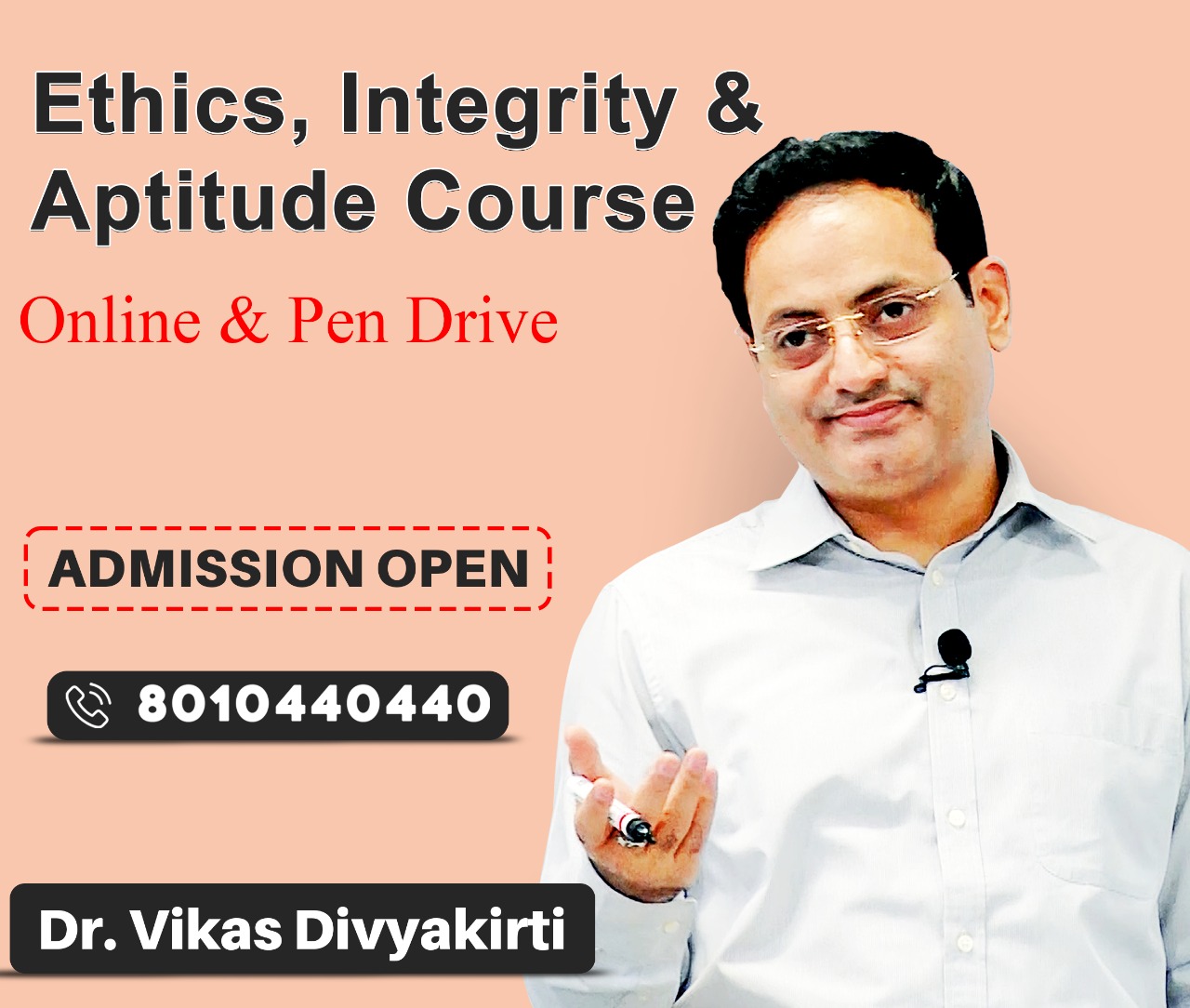
Biodiversity & Environment
Not on Track to Achieve Forest Goals
For Prelims: Paris Agreement, Forest, Kyoto protocol, Green House Gas, Conference of Parties, United Nations Conference on Climate Change (COP 26), Nationally Determined Contributions (NDC)
For Mains: Paris Climate Agreement and its Impacts
Why in News?
According to a new report, the world is not on track to achieve forest goals of ending and reversing deforestation by 2030.
- Ending deforestation is critical for a credible pathway to the Paris Agreement’s goal of limiting warming by 1.5°C.
What are the Highlights of the Report?
- Only 24% of the necessary commitments for emissions reductions have been made so far.
- Forest-based actions can make an essential contribution to meeting the Paris Agreement’s ambition. It can provide nearly 27% of the solution to help avert climate catastrophe.
- Forest-based solutions provide a crucial annual mitigation potential of around four gigatonnes by 2030.
- Indigenous peoples and local communities play a key role in achieving these outcomes.
- High-Forest-Low-Deforestation (HFLD) countries store 18% of tropical forest carbon worldwide and their access to sufficient climate finance must be rapidly improved.
- But current forest climate finance mechanisms are not adequate for rewarding their historical conservation and resisting increasing pressures to deforest.
What are the Suggestions Given by the Report?
- Existing commitments must be transformed into reality and new commitments must urgently be made to finance forests, or we are at extreme risk of missing the milestone.
- Only half of these commitments have been realised through emissions reduction purchase agreements. Funding for these commitments has not yet been disbursed.
- The countries must have financial aid to scale up their actions to develop and implement ambitious forest-based climate solutions.
- The actions to protect, sustainably manage and restore forests can deliver cost-effective climate change mitigation. These actions can also reverse declines in biodiversity and enhance resilience to climate change.
- Emission reduction must be achieved every year post-2025 for the 2030 goals to remain within reach.
What is the Paris Agreement?
- About:
- The Paris Agreement (also known as the Conference of Parties 21 or COP 21) was adopted in 2015.
- It replaced the Kyoto Protocol which was an earlier agreement to deal with climate change.
- It is a global treaty wherein some 200 countries agreed to cooperate to reduce Green House Gas (GHG) Emissions and rein in climate change.
- It seeks to limit global warming to well below 2°C, preferably to 1.5°C, compared to pre-industry levels.
- Working:
- The Paris Agreement works on a 5- year cycle of increasingly ambitious climate action carried out by countries. In 2020, countries had submitted their plans for climate action known as Nationally Determined Contributions (NDCs).
- Long-Term Strategies:
- Long-term low greenhouse gas emission development strategies (LT-LEDS) provide the long-term horizon for the NDCs. Unlike NDCs, they are not mandatory.
- Tracking Progress:
- With the Paris Agreement, countries established an Enhanced Transparency Framework (ETF). Under the ETF, starting in 2024, countries will report transparently on actions taken and progress in climate change mitigation, adaptation measures and support provided or received.
- It also provides for international procedures for the review of the submitted reports.
- The information gathered through the ETF will feed into the Global stocktake which will assess the collective progress towards the long-term climate goals.
- With the Paris Agreement, countries established an Enhanced Transparency Framework (ETF). Under the ETF, starting in 2024, countries will report transparently on actions taken and progress in climate change mitigation, adaptation measures and support provided or received.
Way Forward
- To achieve this long-term temperature goal, countries should aim to reach global peaking of greenhouse gas emissions as soon as possible to achieve a climate-neutral world by mid-century.
- There is a need for credible short-term commitments, with a clear pathway to medium-term decarbonization, that takes into account the multiple challenges states face, such as air pollution, and development might well be the more defensible choice for some.
UPSC Civil Services Examination Previous Year Question (PYQ)
Q. With reference to the Agreement at the UNFCCC Meeting in Paris in 2015, which of the following statements is/are correct? (2016)
- The Agreement was signed by all the member countries of the UN and it will go into effect in 2017.
- The Agreement aims to limit greenhouse gas emissions so that the rise in average global temperature by the end of this century does not exceed 2ºC or even 1.5ºC above pre-industrial levels.
- Developed countries acknowledged their historical responsibility in global warming and committed to donate $1000 billion a year from 2020 to help developing countries to cope with climate change.
Select the correct answer using the code given below:
(a) 1 and 3 only
(b) 2 only
(c) 2 and 3 only
(d) 1, 2 and 3
Ans: (b)


Governance
Global Vaccine Market Report 2022
For Prelims: Vaccine Inequity, World Health Organisation, Covid-19, Global Vaccine Market Report 2022, Immunization Agenda 2030 (IA2030)
For Mains: Issue of Vaccine Inequity, Challenges and Solutions
Why in News?
Recently, the World Health Organisation (WHO) released ‘Global Vaccine Market Report 2022’.
- This is the first report to capture the implications of Covid-19 for vaccine markets highlighting the issue of vaccine inequity.
What are the Findings of the Report?
- Vaccine Inequity, not a Unique Phenomenon:
- It shows that inequitable distribution is not unique to Covid-19 vaccines, with low-income countries consistently struggling to access vaccines that are in-demand by high-income countries. Limited vaccine supply and unequal distribution drive global disparities.
- The human papillomavirus (HPV) vaccine against cervical cancer has only been introduced in 41% of low-income countries, even though they represent much of the disease burden, compared to 83% of high-income countries.
- It shows that inequitable distribution is not unique to Covid-19 vaccines, with low-income countries consistently struggling to access vaccines that are in-demand by high-income countries. Limited vaccine supply and unequal distribution drive global disparities.
- Price Disparities:
- Affordability is a major obstacle to vaccine access. While prices tend to be tiered by income, price disparities see middle-income countries paying as much – or even more – than wealthier ones for several vaccine products.
- Free-Market Dynamics:
- Free market dynamics is depriving some of the world's poorest and most vulnerable people of their right to health. Therefore, changes are much needed to the global vaccine market to save lives, prevent disease and prepare for future crises.
- Scale-up during Health Emergencies:
- Approximately 16 billion vaccine doses, worth US$ 141 billion, were supplied in 2021, almost three times the 2019 market volume (5.8 billion) and nearly three-and-a-half times the 2019 market value (US$ 38 billion).
- The increase was primarily driven by Covid-19 vaccines, showing the incredible potential of how vaccine manufacturing can be scaled up in response to health needs.
- Approximately 16 billion vaccine doses, worth US$ 141 billion, were supplied in 2021, almost three times the 2019 market volume (5.8 billion) and nearly three-and-a-half times the 2019 market value (US$ 38 billion).
- Concentrated Manufacturing Base:
- Although manufacturing capacity worldwide has increased, it remains highly concentrated.
- Ten manufacturers alone provide 70% of vaccine doses (excluding COVID-19).
- Several of the top 20 most widely used vaccines (such as PCV, HPV, measles and rubella containing vaccines) each currently rely mainly on two suppliers.
- In 2021, the African and Eastern Mediterranean regions were dependent on manufacturers headquartered elsewhere for 90% of their procured vaccines.
- This concentrated manufacturing base leads to risk of shortages as well as regional supply insecurity.
- Entrenched intellectual property monopolies and limited technology transfer further limit the ability of building and using local manufacturing capacity.
- Although manufacturing capacity worldwide has increased, it remains highly concentrated.
- Limited Investment in Vaccines Other than Covid-19:
- The health of markets is also concerning for several of the vaccines commonly needed for emergencies, such as against cholera, typhoid, smallpox/monkeypox, Ebola, meningococcal disease, where demand surges with outbreaks and is hence less predictable.
- The continued limited investment in these vaccines could be devastating for people’s lives.
- The health of markets is also concerning for several of the vaccines commonly needed for emergencies, such as against cholera, typhoid, smallpox/monkeypox, Ebola, meningococcal disease, where demand surges with outbreaks and is hence less predictable.
- Immunization Agenda 2030 (IA2030):
- The report highlights the opportunities for more alignment of vaccine development, production and distribution with a public health agenda, towards achieving the Immunization Agenda 2030 (IA2030) goals and informing pandemic prevention, preparedness, and response efforts.
What are the Recommendations of the Report?
- For Governments:
- Frame clear immunization plans and more aggressive investment
- Get a stronger oversight of vaccine development, production and distribution
- Emphasise on regional research and manufacturing hubs
- Devise pre-agreeing rules for government collaboration in times of scarcity on issues such as vaccine distribution, intellectual property and the circulation of inputs and goods.
- For Industry:
- Focus on research efforts for WHO priority pathogens
- Ensure transparency.
- Facilitate technology transfer.
- Commit to specific equity-driven allocation measures.
- For International Organizations and Partners:
- Prioritize Immunization Agenda 2030 goals.
- Support country-driven initiatives.
- Push for the application of resolutions on market transparency.
UPSC Civil Services Examination, Previous Year Questions (PYQ)
Prelims
Q. In the context of vaccines manufactured to prevent COVID-19 pandemic, consider the following statements: (2022)
- The Serum Institute of India produced COVID-19 vaccine named Covishield using mRNA platform.
- Sputnik V vaccine is manufactured using vector based platform.
- COVAXIN is an inactivated pathogen based vaccine.
Which of the statements given above are correct?
(a) 1 and 2 only
(b) 2 and 3 only
(c) 1 and 3 only
(d) 1, 2 and 3
Ans: (b)
Exp:
- COVISHIELD vaccine is based on the platform which uses a recombinant, replication-deficient chimpanzee adenovirus vector encoding the SARS-CoV-2 Spike (S) glycoprotein. Following administration, the genetic material of part of coronavirus is expressed which stimulates an immune response. Hence, statement 1 is not correct.
- Sputnik V is the world's first registered vaccine based on a well-studied human adenovirus vector platform. It has been approved for use in 71 countries with a total population of 4 billion people. The vaccine is named after the first Soviet space satellite. The vaccine’s efficacy is 97.6%, based on the analysis of data on the incidence of coronavirus among Russians vaccinated with both vaccine components between December 5, 2020 and March 31, 2021. Hence, statement 2 is correct.
- Covaxin is an inactivated viral vaccine. This vaccine is developed with Whole-Virion Inactivated Vero Cell-derived technology. They contain inactivated viruses, which cannot infect a person but still can teach the immune system to prepare a defence mechanism against the active virus. Hence, statement 3 is correct.
- Therefore, option B is correct.
Mains
Q. What is the basic principle behind vaccine development? How do vaccines work? What approaches were adopted by the Indian vaccine manufacturers to produce COVID-19 vaccines? (2022)


Governance
‘Eat Right Station’ Certification
For Prelims: ‘Eat Right Station’ Certification, Food Safety, National Health Policy 2017, Ayushman Bharat, POSHAN Abhiyaan, Anaemia Mukt Bharat, Swachh Bharat Mission
For Mains: Importance of Food Safety and related Initiatives
Why in News?
Recently, Bhopal Railway Station has been awarded a 4- star 'Eat Right Station' certification for providing high-quality, nutritious food to passengers.
- The 4-star rating indicates full compliance by the station to ensure safe and hygienic food is available to passengers.
What is 'Eat Right Station' Certification?
- About:
- The 'Eat Right Station' certification is awarded by Food Safety and Standards Authority of India (FSSAI) to railway stations that set benchmarks in providing safe and wholesome food to passengers.
- The station is awarded a certificate upon a conclusion of an FSSAI-empanelled third-party audit agency with ratings from 1 to 5.
- The certification is part of the 'Eat Right India' movement.
- Other Railway Stations with this Certification:
- Anand Vihar Terminal Railway Station; (Delhi), Chhatrapati Shivaji Terminus; (Mumbai), Mumbai Central Railway Station; (Mumbai), Vadodara Railway Station, Chandigarh Railway Station.
What is the Eat Right Movement?
- It is an initiative of FSSAI to transform the country’s food system in order to ensure safe, healthy and sustainable food for all Indians. Its tagline is ‘Sahi Bhojan, Behtar Jeevan’.
- It is aligned to the National Health Policy 2017 with its focus on preventive and promotive healthcare and flagship programmes like Ayushman Bharat, POSHAN Abhiyaan, Anaemia Mukt Bharat and Swachh Bharat Mission.
- Eat Right India adopts a judicious mix of regulatory, capacity building, collaborative, and empowerment approaches to ensure that our food is suitable both for the people and the planet.
What are the Related Initiatives?
- State Food Safety Index:
- FSSAI has developed it to measure the performance of States on five parameters of food safety - Human Resources and Institutional Data, Compliance, Food Testing - Infrastructure and Surveillance, Training & Capacity Building and Consumer Empowerment.
- Eat Right Awards:
- Instituted by FSSAI to recognize the contribution of food companies and individuals to empower citizens to choose safe and healthy food options.
- Eat Right Mela:
- Organised by FSSAI, it is an outreach activity for citizens to nudge them towards eating right.
What is the Importance of Food Safety?
- Access to sufficient amounts of safe food is key to sustaining life and promoting good health.
- Foodborne illnesses are usually infectious or toxic in nature and often invisible to the plain eye, caused by bacteria, viruses, parasites or chemical substances entering the body through contaminated food or water.
- An estimated 4,20,000 people around the world die every year after eating contaminated food and children under 5 years of age carry 40% of the foodborne disease burden, with 1,25, 000 deaths every year.
- Food safety has a critical role in assuring that food stays safe at every stage of the food chain - from production to harvest, processing, storage, distribution, all the way to preparation and consumption.
- Food production is responsible for up to 30% of global greenhouse-gas emissions contributing to global warming.
What is FSSAI?
- It is an autonomous body under the Ministry of Health and Family Welfare, Government of India. It has been established under Food Safety and Standards Act, 2006 which consolidates various acts and orders that have hitherto handled food related issues in various Ministries and Departments.
- The Food Standards and Safety Act, 2006 replaced several Acts and Orders like the Prevention of Food Adulteration Act, 1954; Fruit Products Order, 1955; etc.
- FSSAI is headed by a non-executive Chairperson, appointed by the Central Government, either holding or have held a position, not below the rank of Secretary to the Government of India. It is not under the charge of Director General of Health Services.
- FSSAI has been created for laying down science-based standards for articles of food and to regulate their manufacture, storage, distribution, sale and import to ensure availability of safe and wholesome food for human consumption.
UPSC Civil Services Examination Previous Year Question (PYQ)
Q1. With reference to pre-packaged items in India, is it mandatory to the manufacturer to put which of the following information on the main label, as per the Food Safety and Standards (Packaging and Labelling) Regulations, 2011? (2016)
- List of ingredients including additives
- Nutrition information
- Recommendations, if any, made by the medical profession about the possibility of any allergic reactions
- Vegetarian/non-vegetarian
Select the correct answer using the code given below:
(a) 1, 2 and 3
(b) 2, 3 and 4
(c) 1, 2 and 4
(d) 1 and 4 only
Ans: (c)
- According to Food Safety and Standards (Packaging and Labelling) Regulations, 2011 for labelling of prepackaged foods, every package of food shall carry the following information on the label:
- Name of Food: The name of the food shall include trade name or description of food contained in the package.
- List of Ingredients: Except for single ingredient foods, a list of ingredients shall be declared on the label. Hence, 1 is correct.
- Every package of “Non-Vegetarian” food shall bear a declaration to this effect made by a symbol and colour code to indicate that the product is Non-Vegetarian Food. The symbol shall consist of a brown colour filled circle, having a diameter not less than the minimum size specified. Hence, 4 is correct.
- Nutritional Information or nutritional facts per 100 gm or 100 ml or per serving of the product shall be given on the label containing the following:
- Energy value in kcal;
- The amounts of protein, carbohydrate (specified quantity of sugar) and fat in grams (g);
- The amount of any other nutrient for which a nutrition or health claim is made;
- Wherever, numerical information on vitamins and minerals is declared, it shall be expressed in metric units.
- Where the nutrition declaration is made per serving, the amount in gram (g) or millilitre (ml) shall be included for reference besides the serving measure. Hence, 2 is correct. Therefore, option (c) is the correct answer.
Q2. Consider the following statements: (2018)
- The Food Safety and Standards Act, 2006 replaced the Prevention of Food Adulteration Act, 1954.
- The Food Safety and Standards Authority of India (FSSAI) is under the charge of Director General of Health Services in the Union Ministry of Health and Family Welfare.
Which of the statements given above is/are correct?
(a) 1 only
(b) 2 only
(c) Both 1 and 2
(d) Neither 1 nor 2
Ans: (a)


Important Facts For Prelims
Acharya Kripalani
Why in News?
Recently, the Prime Minister of India has paid tributes to Acharya Kripalani on his Jayanti.
Who was Acharya Kripalani?
- About:
- He was born on 11th November 1888 in Hyderabad, Sindh.
- His original name was Jivatram Bhagwandas Kripalani but was popularly known as Acharya Kripalani. He was an independence activist, Indian politician and an Educationist.
- Educationist:
- From 1912 to 1927, he taught at various places before becoming wholly involved in the freedom movement.
- He earned the moniker ‘Acharya’ around 1922 when he was teaching at the Gujarat Vidyapith, founded by the Mahatma a couple of years before.
- An Environmentalist:
- He, along with Vinoba Bhave, was involved in preservation and conservation activities throughout the 1970s.
- Independence Activist:
- He was associated with Gandhi by 1917 after Gandhi had taken up the cause of indigo workers in Gujarat.
- He was part of the Non-Cooperation Movement (1920-22) and the Civil Disobedience movements (started in 1930) and Quit India Movement (1942).
- He was the President of Indian National Congress (INC) at the time of independence. He served in the Interim government of India (1946–1947) and the Constituent Assembly of India.
- Political Career:
- He became one of the founders of the Kisan Mazdoor Praja Party (KMPP) after independence leaving congress.
- He was elected to the Lok Sabha in 1952, 1957, 1963 and 1967 as a member of Praja Socialist Party.
- He moved the first-ever No confidence motion in Lok Sabha in 1963, immediately after the India-China War (1962).
- In 1963, Sucheta Kripalani, a Congress leader became the Chief Minister of Uttar Pradesh, a first for any woman in the country while her husband Acharya remained an opponent to the Congress.
- He was a critic of Nehru's policies and Indira Gandhi’s rule. He was arrested during Emergency (1975).
- Books:
- My Times, his autobiography published posthumously in 2004.
- Kripalani was the author of several books, including Gandhi: His Life and Thought (1970).

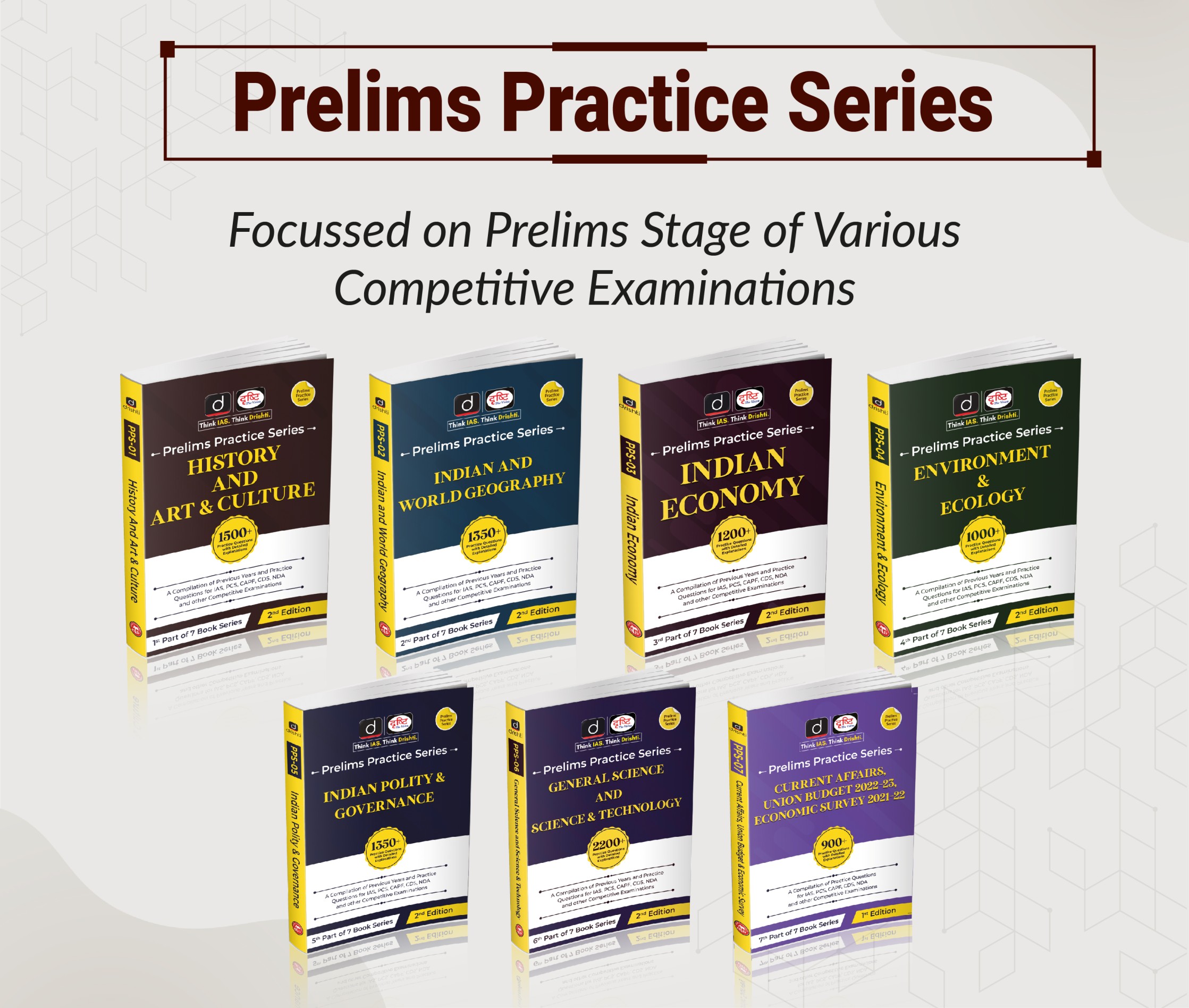
Important Facts For Prelims
Selection of Vice-Chancellors
Why in News?
Recently, the Supreme Court said in a judgment that a Vice-Chancellor should have a minimum teaching experience of 10 years as a professor in a university and his or her name should be recommended by a search-cum-selection committee.
- The court referred to Section 10(3) of the University Act, 2019 which provided that the committee should prepare a list of three persons for appointment as VC based on their qualification and eligibility.
What is the Process of the Appointment of a Vice Chancellor?
- According to the University Grants Commission (UGC) Regulations, 2018, the VC of a university, in general, is appointed by the Visitor/Chancellor, from a panel of three to five names recommended by the duly constituted Search cum Selection Committee.
- A visitor is empowered to call for a set of fresh names in case of dissatisfaction with the given panel.
- In Indian universities, the President of India is the ex-officio Visitor of all the Central Universities and the Governor of the respective states is the Chancellor of all the state universities.
- Necessarily this system is not uniform in all the universities. As far as the procedures adopted by different states are concerned, they vary.
- Where there is a conflict between the State University Act and the UGC Regulations, 2018 to the extent State legislation is repugnant, the UGC Regulations, 2018 shall prevail.
- According to Article 254(1), if any provision of a state law is repugnant to a provision in a law made by the Parliament, which the Parliament is competent to enact, or with any existing law regarding any matter in the Concurrent List, then the Parliamentary law would prevail over the State law.
What is the Role of Vice-Chancellor?
- As per the constitution of the University, the Vice- Chancellor (VC) is considered the ‘Principal Academic and Executive Officer of the University’.
- As head of the University, he/she is expected to function as a ‘bridge’ between the executive and the academic wing of the university.
- It is to facilitate this expected role that universities are always in search of persons with values, personality characteristics and integrity in addition to academic excellence and administrative experience.
- The reports of the Radhakrishnan Commission (1948), Kothari Commission (1964-1966), Gnanam Committee (1990) and Ramlal Parikh Committee (1993) have highlighted the importance of the role of VC in maintaining the quality and relevance of universities, in addition to its growth and development, keeping in view, the much-needed changes from time to time.
- He shall be the ex-officio Chairman of the Court, Executive Council, Academic Council, Finance Committee and Selection Committees and shall, in the absence of the Chancellor preside at any convocation of the university for conferring degrees.
- It shall be the duty of the Vice-Chancellor to see that the provisions of the Act, Statutes and Ordinances and Regulations are fully observed and he should have the power necessary for the discharge of this duty.


Important Facts For Prelims
Nadaprabhu Kempegowda
Why in News?
Recently, the Prime Minister of India unveiled a 108-foot statue of Nadaprabhu Kempegowda and inaugurated Terminal 2 of Bengaluru airport, which is named after the 16th-century figure credited with founding the city.
- The status is called the “Statue of Prosperity”.
What are the Key Features of the Statue of Prosperity?
- As per the ‘World Book of Records’, it is the first and the tallest bronze statue of a founder of a city.
- Renowned sculptor and Padma Bhushan awardee Ram Vanji Sutar has designed the statue.
- Sutar had built the ‘Statue of Unity’ in Gujarat and the statue of Mahatma Gandhi in Bengaluru’s ‘Vidhana Soudha’.
- As a precursor to the unveiling, ‘Mruthike’ (sacred mud) was collected from over 22,000 locations across the state, which was mixed symbolically with the mud beneath one of the four towers of the statue.
Who was Nadaprabhu Kempegowda?
- About:
- He was born in 1513 in a village near Yelahanka.
- He was the chieftain under the Vijayanagara Empire of the 16th century.
- He is an iconic figure among Vokkaligas, Karnataka’s second most dominant community after Lingayats.
- Education:
- He studied for nine years in a GuruKula near Aigondapura (present day Hessaraghatta) where he learnt statecraft and martial skills.
- Achievements:
- He is widely acknowledged as the founder of Bengaluru, Karnataka.
- It is said that he conceived the idea of a new city while hunting with his minister, and later marked its territory by erecting towers in four corners of the proposed city.
- He is also credited with having developed around 1,000 lakes in the city to cater to its drinking and agricultural needs.
- Kempegowda has been credited for abolishing the practice of cutting the fingers of the left hand of an unmarried woman during a custom known as ‘Bandi Devaru’, an important custom of Morasu Vokkaligas.
- He is widely acknowledged as the founder of Bengaluru, Karnataka.
- Death:
- He died in 1569, having ruled for about 56 years.
- Recognition:
- State governments have dedicated important landmarks after him – the Kempegowda International Airport, the Kempegowda Bus Stand, and the Nadaprabhu Kempegowda Metro Station.



